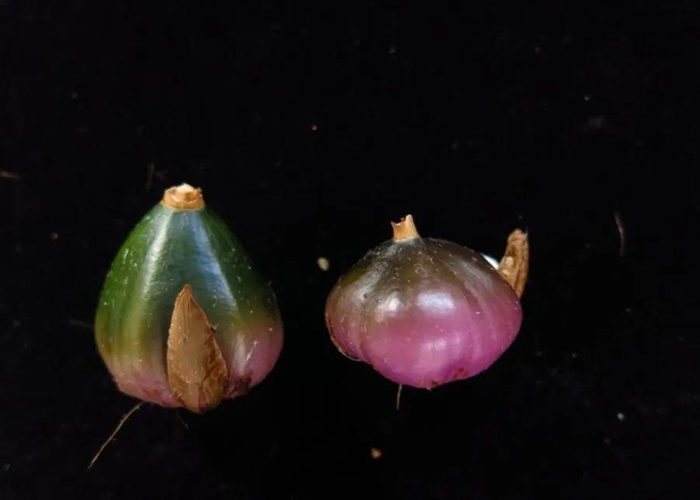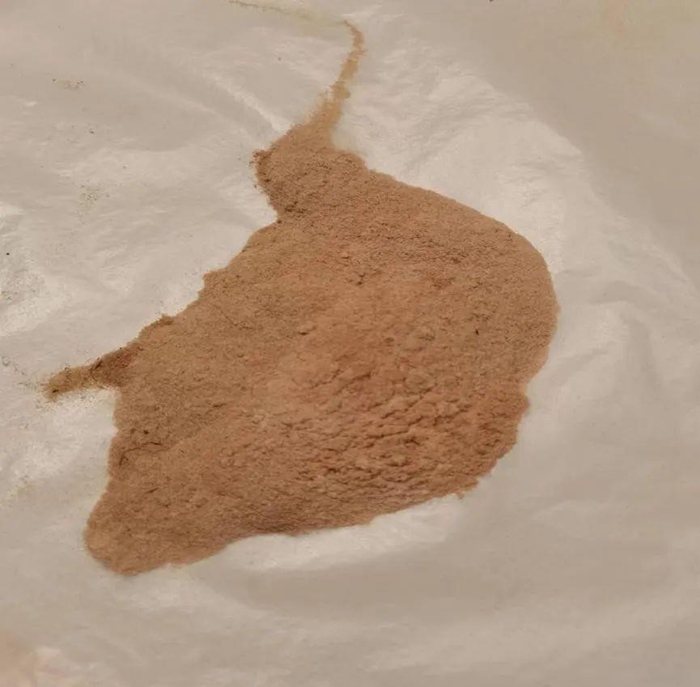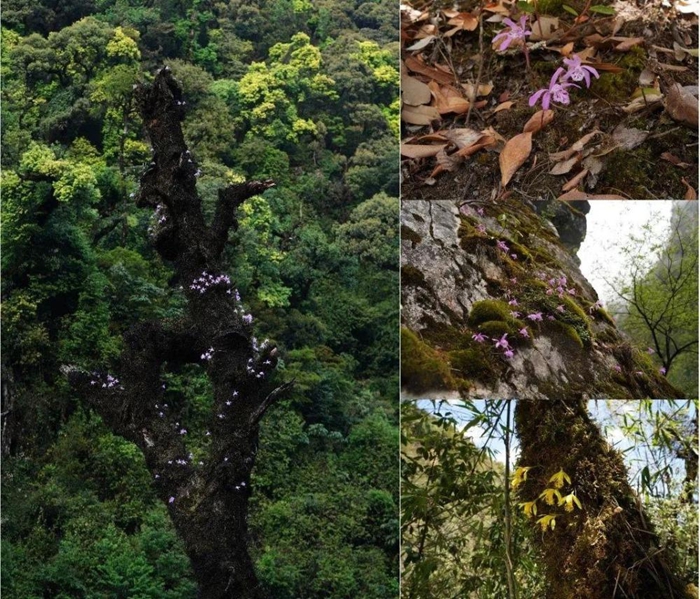Notice!You may buy a national second -level protection plant
Author:Beijing Science and Technology Time:2022.08.01
"Big pandas, golden monkeys, black neck cranes ...", every time we mention protecting animals, we can always say a large series, but if you replace it with plants? In fact, the living conditions of many wild plants are also very difficult, and we need more attention.
In 2021, all garlic orchids were included in the "National Key Protection Wild Plants List". Although Diaogan wild resources were protected by law, in recent years, the price of Diaogan has remained high. The excavation is still very rampant.
What is Diaogulan? What can we do to protect it?
Is the Diary orchid related to garlic?
Pleione D. Don belongs to Orchidaceae, Epidendroidae, Tr. Arethuseae Lindl.
There are more than 20 species of dilog orchids in the world, mainly distributed in China, India, Nepal, Bhutan, Myanmar, Thailand, Laos, and Vietnam. The southwest mountain of my country is its modern distribution center, and Yunnan is the place with the most adaptive radiation.
Diarypan is not garlic, but the orchid plant. It has this very grounded name because it has a unique fake bulb structure. From the outside, it is really a bit like the garlic.

Diarypan fake bulb. Picture source: Zhang Wei, Institute of Kunming Institute of Chinese Academy of Sciences
The pseudo -jeopardy of the done orchid is an important place for water storage and storage substances, and has the characteristics of winter dormant, which can help the liquor orchid through the arid winter. On the side, the Minister of Gendai made a beautiful little flower, and then the new roots began to grow slowly. The leaves started to form (and most of them only had a lonely leaf). Such a new plant was born.
As the leaves grow up slowly, the base of the buds gradually expands to form a new fake bulb. The old fake bulbs gradually shrink and shrink, and it will be updated every year.

History of life of gorgeous garlic. Picture source: zhang et al., 2022
In recent years, the demand for market demand for P. Bulbocodioides and Yunnan Diaogan (P. Yunnnensis) has increased year by year, and artificial cultivation technology has not matured, leading to its market price soared, and wild germplasm resources have been severely damaged.
The State Forestry and Grassland Bureau promulgated the "National Key Protection Wild Plants List" in September 2021. Among them, all of the genus Diaoguan is listed as a national second -level protection plant.
"薅" is too hard, it is too difficult to grow up
The most important reason for the dilute orchid is listed as a second -level protective plant.
However, it is not wrong itself. Diaoga orchids have no embryo as sexy seeds, as thin as dust, and the germination rate is extremely low in the natural state.

Dust -shaped garlic seeds. Picture source: Hu Zhonghui, an engineer of the Institute of Kunming Institute of Chinese Academy of Sciences
On the other hand, Diaogan grows mainly on the surface or tree trunk covered with moss covered with moss. The growth environment is very bad, and it is easy to be damaged by artificial destruction, and once it is destroyed, it is difficult to recover.
Doronal seeds are difficult to germinate and narrowed in suitable areas, and artificial cultivation is extremely difficult, which further exacerbates artificial excavation.

Diarypan is a plant habitat. Picture source: Zhang Wei, Institute of Kunming Institute of Chinese Academy of Sciences
What other plants are prohibited from digging?
Although Diaogan has been protected by law, due to the high prices of Diaogan in recent years, the huge interests are driven by the huge interests, and some personnel are still risking. In Dali, Lijiang, Kunming and other places in Yunnan, the excavation of wild garlic orchids has been repeatedly banned.
In addition to the lonely garlic, the "National Key Protection of Wild Plants List" is included in 455 species and 40 categories of national key protection of wild plants, including 54 and 4 categories of national first -level protection wild plants, 401 species of national second -level protection wild plants Category 36.
Like the ginkgo and red beans we are very familiar with, they are all damaged because of high medicinal value, and they are included in key protection plants under natural conditions. Behavior.
Extend the hand of assistance to Diaogan
How can we protect the liquid orchid while meeting the actual needs?
Scientists believe that protecting wild plants must solve the relationship between protection and utilization, and protect and use it in reasonablely.
At present, scientists of the Kunming Institute of Chinese Academy of Sciences use Diaogan as the experimental materials, and have cultivated 19 new species of viewing through hybrid breeding, and have also established a key technical system for factory seedling breeding techniques and industrialized planting planting planting of Diaogan.
Regarding the outer garlic orchids, the industrial R & D chain from planting resources, innovation to key technical research and demonstration applications, truly realized the benign development goals of protection in protection and using the use of protection.
One day in the future, it may become a common plant in our family.
- END -
Multi -department joint inspection and eliminating gas safety hazards

Zhang Mengyuan, a Correspondent Zhu Jiangmiao Correspondent of Ping Meng MediaOn t...
Tears!Is there a shadow of this wave of "memories killing"?

Yesterday, the Voice of Zhejiang launched a special product of Rong Media- My Year...